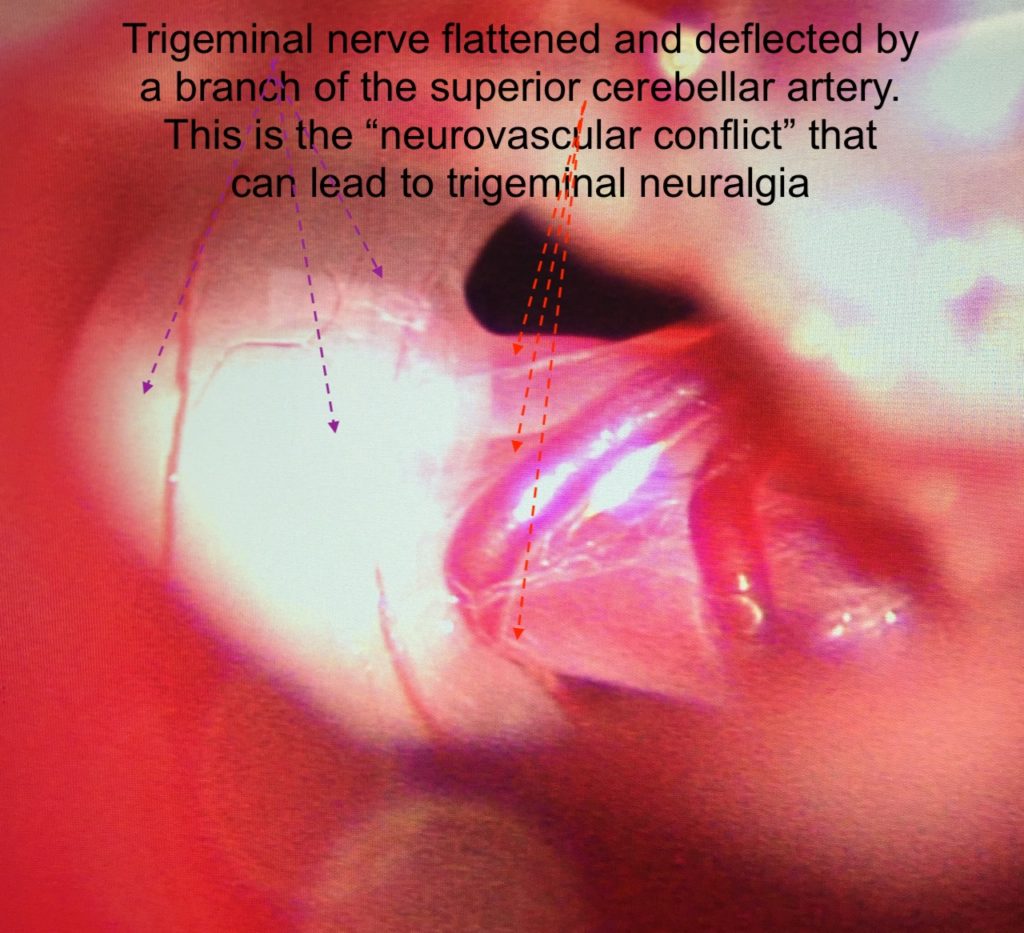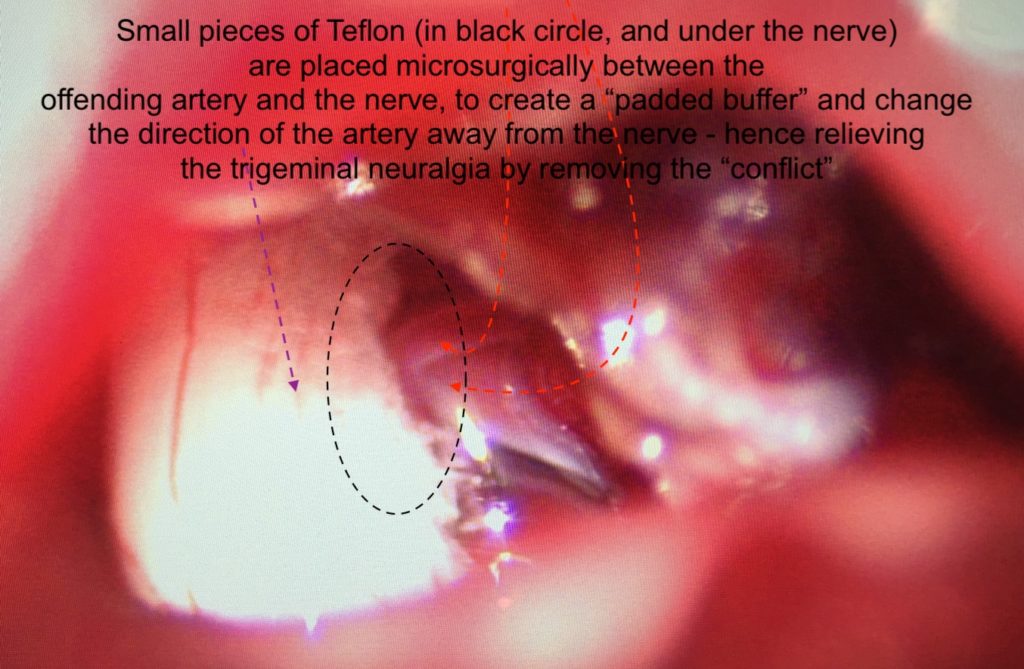Why do so many trigeminal neuralgia patients suffer for years in pain BEFORE having microvascular decompression (MVD) surgery?
Trigeminal neuralgia is a condition that can really negatively affect a person’s life. Its successful treatment by an expert neurosurgeon/expert microsurgeon can be positively life-transforming. I’ve written about this condition and its surgical treatment elsewhere on this Website (see the link at bottom of this post, under the photos).
A recent trigeminal neuralgia patient of mine, following her microvascular decompression (MVD) surgery, beautifully alluded to the post-operative transformation in her recent Google Review on her experience with CNS Neurosurgery. She wrote that she had “…a new lease on life, because I am no longer living in pain anymore and my quality of life, both physically and mentally has dramatically improved.”
This sort of benefit is something I hear often from my trigeminal neuralgia patients, post-operatively within a few weeks of the surgery.
One thing I’ve found to be a common situation among the trigeminal neuralgia patients I have treated via microvascular decompression (MVD) surgery is that they have been suffering for years in pain prior to the operation. I’ve frequently asked them why they waited to have the microvascular decompression surgery. The reasons go something like this, i.e., one or more of the following three:
- There was a delay in their diagnosis and referral to a neurosurgeon (they went from their GP, to a dentist, to an oral surgeon, then to a neurologist and then remained under the neurologist’s care for some years);
- Their neurologist tried to manage their symptoms, and tried hard for (often) years (eventually trialing a variety of medications at higher and higher doses);
- They had been told by a doctor, sometimes their neurologist (or they themselves thought or heard from someone else) that the surgical option was “too risky” and/or prone to failure.
To people with trigeminal neuralgia/severe facial pain, all I’d like say about the above three points, in response to each, is this:
- Your diagnosis and referral to a specialist should not be delayed. It is certainly wise to have a dentist and oral surgeon exclude a dental-related cause for your facial pain; and it is good to see a neurologist early after that for confirmation that your painful condition is, in fact, typical trigeminal neuralgia (aka ‘tic douloureux’);
- If your neurologist has confirmed your facial pain condition to be trigeminal neuralgia, but has not been able to effectively alleviate the symptoms during the medication trials within 12 months, or if your symptoms are continuing and severe, you should be referred to an experienced neurosurgeon (i.e., one microsurgically experienced with this specific surgery because many are not) as soon as possible. This will allow for, at the very least, a full discussion of your options, regardless of what and who you choose. I am happy to have that discussion with you any time.
- While brainstem region surgery has its risks, what is also important to know is that in suitably experienced microsurgical hands, the operation of microvascular decompression for trigeminal neuralgia should not be regarded as a high-risk one, but rather:
- an overall safe one that…
- can be done minimally invasively, and that…
- should transform your life very positively.
- Click here for more information on trigeminal neuralgia and microvascular deecompression/MVD surgery
< Back to blog

